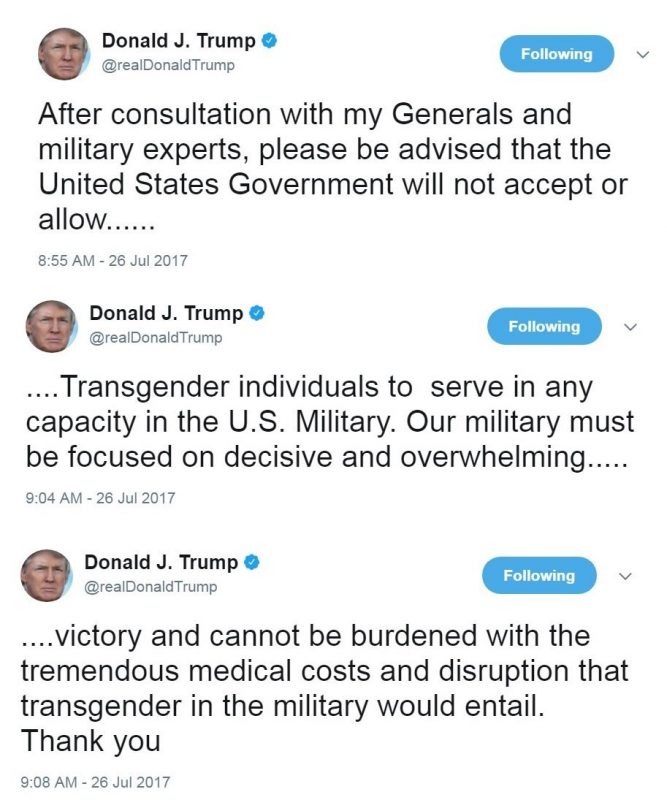Army Staff Sgt. Patricia King woke up Wednesday to her phone blowing up with calls and messages from other service members about the return of a ban on transgender people serving in the US military.
President Donald Trump announced the policy reversal on Twitter. The move left King and other transgender active-duty members wondering how the policy would affect those who have been serving openly for the past year or more.
“I felt like I had just gotten fired via tweet,” King told CNN.
Until she hears otherwise from her command, the soldier said she plans to continue going to work.
“The great thing about being in the military is when we take our oath we take it to our country,” she said. “My service is not diminished in any way by what has transpired, and I’m eager to continue proudly serving my country.”
The National Center for Transgender Equality estimates that more than 15,000 transgender people are serving in the military, some openly, some not. For many, the Pentagon’s decision in 2016 to lift the ban on transgender service members was a watershed moment that signaled a new era of acceptance.
‘What does this mean for us?’
For King, the ban’s lift meant she could finally be herself on the job. For years, she lived a double life of presenting as a man when at work on base by adhering to male grooming standards and using men’s facilities. At home and with friends, she was the woman she felt she’d always been.
The 2016 policy enabled her to formally transition in the military. She began adhering to female grooming standards in July and began the process of changing her gender marker in Department of Defense personnel files.
Now, after Wednesday’s development, she fear’s the momentum is gone. Trump’s announcement leaves more questions than answers, King said, especially for active transgender troops.
“I think there’s some ambiguity in the statement that was made and it’s going to take some further development to figure out the intent,” she said. “The policy to allow people who are serving openly has been in effect and is going strong. What does this mean for us?”
A debate over transgender costs
It was no secret that the Defense Department was reviewing the policy as part of a process to allow the Pentagon to determine how to accept new transgender recruits into the military. On the eve of a one-year deadline, Defense Secretary James Mattis announced that he was delaying the implementation of the new policy, saying he needed more time.
In announcing the reversal, Trump cited “tremendous medical costs and disruption that transgender in the military would entail.” He said the decision was made in consultation with generals and military advisers, but provided no further details on evidence forming the basis of his claim.
However, a Rand Corp. study commissioned by the Department of Defense and published in 2016 concluded that letting transgender people serve openly would have a “minimal impact” on readiness and health care costs, largely because there are so few in the military’s 1.3 million-member force.
The cost could range from $2.4 million and $8.4 million, an amount that would represent an “exceedingly small proportion” of total health care expenditures, the study found.
Many active transgender service members were holding out hope that the policy would stand and more transgender troops would be welcomed into their ranks, said King, who is stationed at Fort Lewis in Washington state. After 13 years of service and two tours abroad, King said, she cannot imagine leaving the Army.
And, she won’t go without a fight. She’s a soldier and a patriot, after all.
“When a problem is presented, I see it as an opportunity to take action. For me, this means figuring how to proceed, whether through leading conversations or contacting members of the government and sharing my story,” she said.
“Transgender service members are proudly serving our country and we will continue our service. Nobody is going to just walk away because we have a job to do.”
